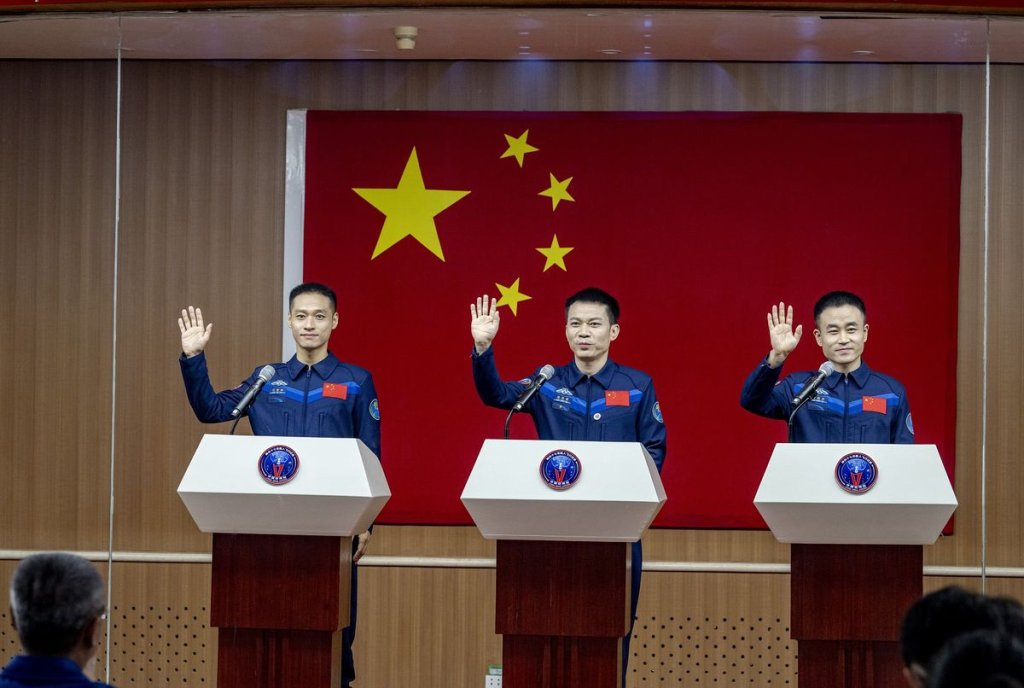
China unveils Shenzhou 17 astronauts launching to Tiangong space station tonight (video) (Image Credit: Space.com)
China has revealed its latest crew of astronauts set for a six-month-long mission to the Tiangong space station.
The identities of the Shenzhou 17 mission commander Tang Hongbo, and crewmates Tang Shengjie and Jiang Xinlin, were unveiled in a press conference at the Jiuquan spaceport in the Gobi Desert on Wednesday (Oct. 25) by the China National Space Administration.
The trio are set to launch aboard Shenzhou 17 spacecraft and a Long March 2F rocket from Jiuquan at 11:14 p.m. EDT tonight (or 0314 GMT, 11:14 a.m. Beijing Time on Oct. 26).

The trio will reach the Tiangong space station 6.5 hours later. They will be greeted by the three Shenzhou 16 astronauts currently working aboard the orbital outpost.
Tang first flew to space aboard Shenzhou 12, which marked the first crewed visit to Tianhe, the first Tiangong module to be launched into orbit. Tang and Jiang are from China’s third selection batch of astronauts and will be making their first trip to space.
Tang, 48, and his crewmates, both in their early thirties, will be the youngest crew to visit Tiangong. Tang will also be the first astronaut to return to Tiangong.
Related: Watch Chinese astronauts light a match on Tiangong station (video)

The Shenzhou 16 crew will hand over control to the incoming astronauts and depart for Earth on Oct. 31. Shenzhou 16 astronauts Jing Haipeng, Zhu Yangzhu and Gui Haichao have been aboard since late May.
The Shenzhou 17 crew will carry out a range of tasks and duties, including space experiments. They will also conduct Tiangong’s first extravehicular experimental maintenance work during their stay in orbit.
“Currently, space debris is increasing, so the impacts of small space objects on long-duration operational spacecraft are inevitable,” Lin Xiqiang, deputy director of the CMSA, said during the press conference.
“Previous inspection revealed that the space station’s solar panel had also been hit several times by tiny objects in space, suffering minor damage, of course which was taken into account during our design,” he added.
Lin said that a new module would be sent to Tiangong in the future. “Later, we will launch an extension module in due course, upgrading the basic configuration of the space station from a T shape to a cross shape,” Lin added.








